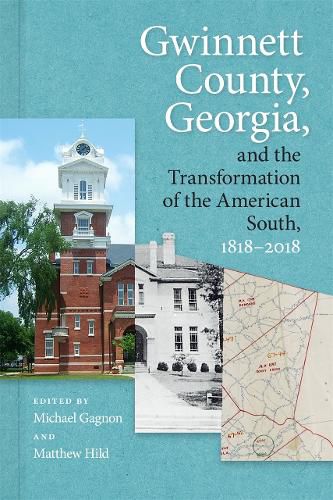Readings Newsletter
Become a Readings Member to make your shopping experience even easier.
Sign in or sign up for free!
You’re not far away from qualifying for FREE standard shipping within Australia
You’ve qualified for FREE standard shipping within Australia
The cart is loading…






In Gwinnett County’s two hundred years, the area has been western, southern, rural, suburban, and now increasingly urban. Its stories include the displacement of Native peoples, white settlement, legal battles over Indian Removal, slavery and cotton, the Civil War and the Lost Cause, New South railroad and town development, Reconstruction and Jim Crow, business development and finance in a national economy, a Populist uprising and Black outmigration, the entrance of women into the political arena, the evolution of cotton culture, the development of modern infrastructure, and the transformation from rural to suburban to a multicultural urbanizing place. Gwinnett, as its chamber of commerce likes to say, has it all.
However, Gwinnett has yet to be the focus of a major historical exploration-until now. Through a compilation of essays written by professional historians with expertise in a diverse array of eras and fields, Michael Gagnon and Matthew Hild’s collection finally tells these stories in a systematic way-avoiding the pitfalls of nonprofessional local histories that tend to ignore issues of race, class, or gender. While not claiming to be comprehensive, this book provides general readers and scholars alike with a glimpse at Gwinnett through the ages.
CONTRIBUTORS: Julia Brock, William D. Bryan, Richard A. Cook Jr., Lisa L. Crutchfield, Michael Gagnon, Edward Hatfield, Keith S. Hebert, Matthew Hild, R. Scott Huffard Jr., David L. Mason, Marko Maunula, Erica Metcalfe, Katheryn L. Nikolich, David B. Parker, Bradley R. Rice, and Carey Olmstead Shellman
$9.00 standard shipping within Australia
FREE standard shipping within Australia for orders over $100.00
Express & International shipping calculated at checkout
In Gwinnett County’s two hundred years, the area has been western, southern, rural, suburban, and now increasingly urban. Its stories include the displacement of Native peoples, white settlement, legal battles over Indian Removal, slavery and cotton, the Civil War and the Lost Cause, New South railroad and town development, Reconstruction and Jim Crow, business development and finance in a national economy, a Populist uprising and Black outmigration, the entrance of women into the political arena, the evolution of cotton culture, the development of modern infrastructure, and the transformation from rural to suburban to a multicultural urbanizing place. Gwinnett, as its chamber of commerce likes to say, has it all.
However, Gwinnett has yet to be the focus of a major historical exploration-until now. Through a compilation of essays written by professional historians with expertise in a diverse array of eras and fields, Michael Gagnon and Matthew Hild’s collection finally tells these stories in a systematic way-avoiding the pitfalls of nonprofessional local histories that tend to ignore issues of race, class, or gender. While not claiming to be comprehensive, this book provides general readers and scholars alike with a glimpse at Gwinnett through the ages.
CONTRIBUTORS: Julia Brock, William D. Bryan, Richard A. Cook Jr., Lisa L. Crutchfield, Michael Gagnon, Edward Hatfield, Keith S. Hebert, Matthew Hild, R. Scott Huffard Jr., David L. Mason, Marko Maunula, Erica Metcalfe, Katheryn L. Nikolich, David B. Parker, Bradley R. Rice, and Carey Olmstead Shellman